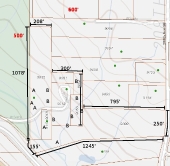




 2
2




"Study books and observe nature; if they do not agree, throw away the books." ~ William A. Albrecht

 1
1




I took 3 samples:
1) the first sample ("West") is top soil at the highest elevation of my block which is on the west side
2) the second sample ("East Top") is top soil from the lowest part of my block which is on the east side.
3) the third sample ("East Sub") is the clay sub soil from the lowest part of my block which is on the east side.
List of Bryant RedHawk's Epic Soil Series Threads We love visitors, that's why we live in a secluded cabin deep in the woods. "Buzzard's Roost (Asnikiye Heca) Farm." Promoting permaculture to save our planet.




















List of Bryant RedHawk's Epic Soil Series Threads We love visitors, that's why we live in a secluded cabin deep in the woods. "Buzzard's Roost (Asnikiye Heca) Farm." Promoting permaculture to save our planet.




My Mission is to grow nutrient dense food and teach what I have learnt to any one who will listen.





|
This one time, at band camp, I had relations with a tiny ad.
The new kickstarter is now live!
https://www.kickstarter.com/projects/paulwheaton/garden-cards
|




